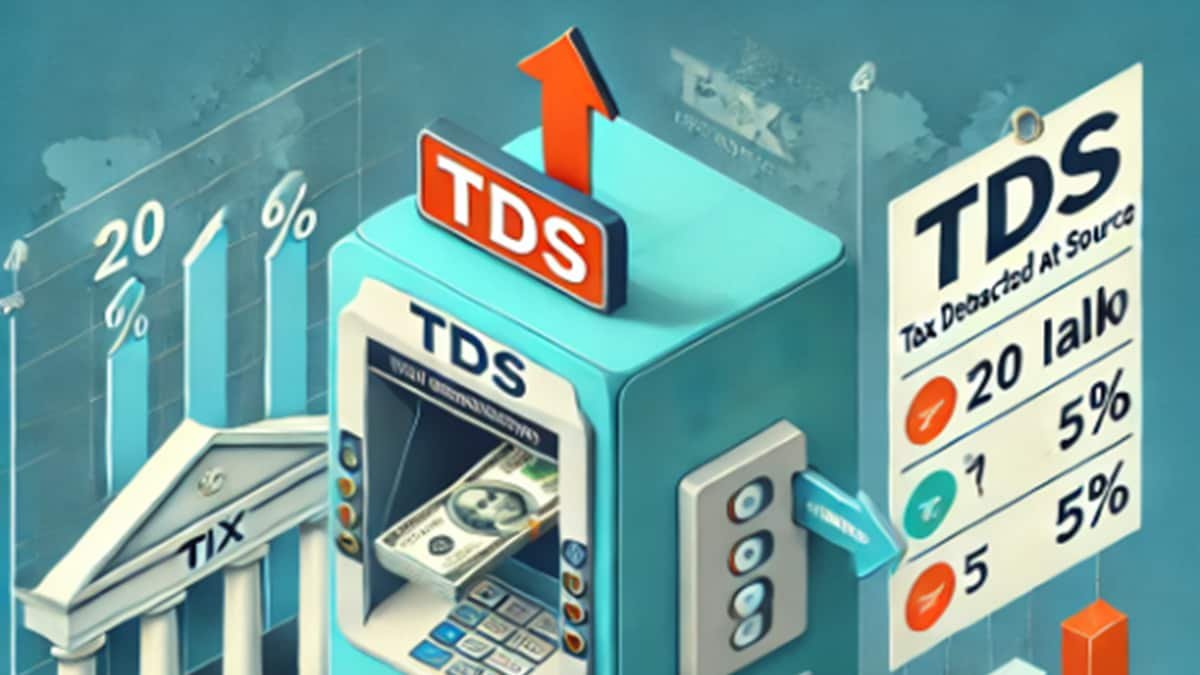TDS under section 194N is deducted by banks (private, public and cooperative) or post offices.
Tax Deducted at Source (TDS) on cash withdrawals is a government mechanism aimed at discouraging large cash transactions and encouraging digital payments. Here is a detailed overview of its provisions, rates and exemptions.
Governing Provision: Section 194N of the Income Tax Act
Section 194N of the Income Tax Act mandates TDS on cash withdrawals above a certain threshold from banks, cooperative banks or post offices.
Introduced on September 1, 2019, it seeks to control cash flow and ensure compliance with income tax norms.
What is TDS on cash withdrawal under section 194N?
Section 194N of the Income Tax Act mandates tax deduction at source (TDS) on cash withdrawals above a certain threshold in a financial year (FY). The threshold is:
- Rs. 20 lakh, if the individual has not filed Income Tax Return (ITR) for the previous three assessment years (AY).
- Rs. 1 crore, if the individual has filed ITR for at least one of the three previous AYs.
At what rate is TDS deducted on cash withdrawal under section 194N?
The applicable TDS rates depend on the ITR filing status of the individual:
For ITR filers (any or all of the previous three):
In the financial year Rs. 2% on cash withdrawals above 1 crore.
For Non-ITR Filers (last three AYs):
-2% on cash withdrawals up to Rs. 20 lakhs but more than Rs. up to 1 crore.
– In the financial year Rs. 5% on cash withdrawals above 1 crore.
This provision is designed to promote transparency and compliance with income tax rules while discouraging excessive cash transactions.
TDS Applicable: Key Guidelines in Details
For withdrawals above 1 crore:
rate: 2% of total cash withdrawals.
Applies to: Withdrawal from one or more accounts maintained by the customer during the financial year.
The updated rules will come into effect from July 1, 2020:
If income tax returns are not filed for the previous three financial years, the following rates are applicable:
- Rs. 20 lakhs but more than Rs. 2% on total cash withdrawal up to 1 crore.
- 5% on total cash withdrawal above 1 crore.
In other cases: Standard 2% TDS rate remains applicable.
From April 1, 2021 onwards:
Cash withdrawals across all accounts are combined to calculate total withdrawals for TDS purposes.
In absence of PAN/Aadhaar:
TDS is charged at a higher rate of 20%.
Who Deducts TDS on Cash Withdrawal under Section 194N?
TDS under section 194N is deducted by banks (private, public and cooperative) or post offices.
Deduction occurs when cash payments are made from accounts maintained with these institutions up to Rs. 20 lakhs or Rs. 1 crore (depending on the individual’s ITR filing status) exceeds the specified threshold.
Exemption from TDS on cash withdrawals
Certain entities and individuals are exempted from TDS under Section 194N. This includes:
-
-
- Government Institutions
- Banking companies, cooperative societies and post offices
- Business Correspondent of Banking Companies or Co-operative Societies.
- White label ATM operators authorized by Reserve Bank of India.
- Institutions notified by the Central Government, subject to certain conditions:
– Cash Replenishment Agencies (CRAs) and franchise agents of white label ATM operators.
-Commission agents or traders working under Agricultural Produce Market Committees (APMC).
– Dealers authorized under FEMA, including franchise agents, sub-agents and full-fledged money changers (FFMCs).
This structured approach ensures compliance with income tax rules while promoting transparency and reducing reliance on cash transactions.
-
